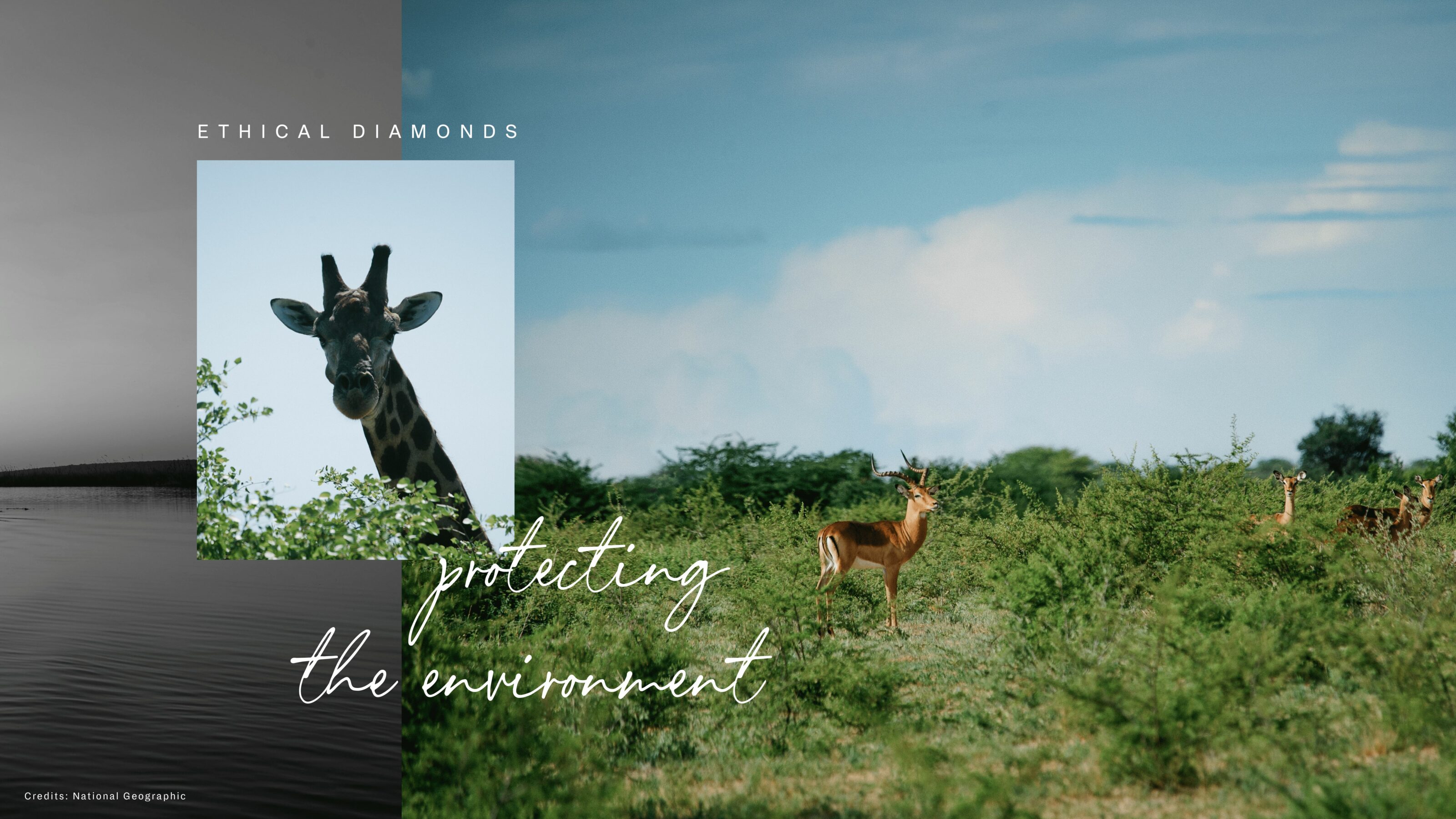Natural Diamonds A Rare, Precious & Sustainable Legacy
The De Beers group has changed lives and positively impacted communities, ecologies and the environment in all the countries they operate in. Read on to know how they are working to leave behind a sustainable legacy.
All Images: De Beers
|
What is it about a diamond that sparks a strong emotional connect? Is it the sparkle? The fact that it is a miracle of nature? Or is it simply its billion-year-old legacy? People all over the world have been captivated by this real gem’s mysterious allure because it draws one in with its fascinating history, reminding everyone who lay their eyes on it, that it is invaluable, inimitable and precious.
Having been buried undisturbed within the mantle, much before even dinosaurs walked the earth, natural diamonds made themselves known to humankind when they erupted onto the surface through mysterious volcanic explosions. They have stood the test of time, weathering extreme heat and pressure in the earth’s mantle, and natural disasters on the surface, yet never compromising on their unmatched brilliance. Through every test and challenge, they have brought to the fore various facets that reflect their resilience, natural beauty and purity.

A celebration of strength, rarity, heritage and durability, one can’t be fooled by how delicate natural diamonds look, because they are anything but. In fact, they are the hardest known natural substance on the planet – 58 times harder than the next mineral – indestructible, as the word ‘diamond’, derived from the Greek word ‘adamas’, signifies.
At De Beers, our 133-year-old philosophy captures this essence of diamonds, forming a part of our ethical practices, maintaining transparency, rarity, natural beauty and responsible sourcing.
It goes without saying that when we responsibly source these very precious gifts of mother nature from places such as Botswana, Canada, Namibia and South Africa, we prioritise our commitment to the environment, wildlife and communities living in these areas. At the heart of everything we do are our ‘Building Forever’ goals that we aim to achieve by 2030. These goals focus on the four pillars that we believe will help us make a meaningful impact in the world– leading ethical practices, partnering for thriving communities, accelerating equal opportunity and protecting the natural world.

Our consumers as well as the modern diamond industry are making effective strides towards being environmentally conscious. People today want to know where their natural diamonds are sourced from and how sustainable they are. As an industry major, the De Beers Group is advancing industry standards when it comes to transparency of diamond provenance.
It is imperative that our consumers know that with every diamond they buy, the community and the environment in some part of the world is directly benefitting from it. As part of the larger diamond industry, all the ethical business practices we follow help local communities, which in turn, generate a long-lasting positive legacy. De Beers, in partnership with countries where we operate, protects the natural world and improves the lives of people associated at every step of the diamond’s journey, even the miners who bring up this wonder for us.
We’ve undertaken path-breaking initiatives in protecting the environment, people and wildlife. The Moving Giants initiative is an epic 1,700 km journey to save 200 elephants, the longest translocation of elephants to Mozambique. Then, there is the Okavango Eternal, under which De Beers is partnering with National Geographic to protect the source waters of the Okavango Delta.
Through the ‘Diamond Route’ project, our dedicated ecology teams protect 500,000 acres of land for conservation in Southern Africa.

While the journey of the diamond from mine to store is one part of the magical aura surrounding this gem, the other alluring aspect is the huge emotional connect it makes with its owner.
No symbol has the same wonder, uniqueness and beauty as a natural diamond.
It has a prized legacy, holds tremendous power, heritage value and meaning as a representation of connection between two people, of a form of self- expression to applaud one’s own achievements, of celebrating milestones and sealing precious memories for a lifetime.
Natural diamonds are so rare and precious that if you were to gather together all gem quality diamonds ever polished since the beginning of time, they would fill only one double-decker bus, with room to spare!
Building Forever has the power to support a brighter future in essential, sustainable and beautiful ways. The role we play in the life of a diamond is relatively short, yet our opportunity to create a positive impact that lives long beyond the last diamond we discover is profound.
